Can the Lightweight Aluminum Alloy Frame LED Display Assembly Be Securely Fixed?
In the evolving field of LED display technology, the demand for lightweight yet structurally strong display assemblies has led to the widespread adoption of aluminum alloy frames. This material has become a preferred choice for manufacturers and event organizers seeking a balance between mobility, reliability, and long-term durability. However, one common question remains—can lightweight aluminum alloy frame LED display assemblies truly be fixed securely? The answer lies in the combination of advanced engineering design, precise assembly systems, and modern fastening technologies that ensure both portability and stability.
1. The Engineering Logic Behind Aluminum Alloy Frames
Aluminum alloys are widely recognized for their exceptional strength-to-weight ratio. Compared with traditional steel structures, aluminum reduces total frame weight by up to 50% while maintaining comparable rigidity. This mechanical advantage allows LED displays to remain stable even during frequent assembly and disassembly in rental or touring applications.
Moreover, aluminum exhibits excellent resistance to corrosion and fatigue. These properties ensure that the display’s frame can withstand prolonged exposure to environmental elements such as humidity and temperature fluctuations. Through anodic oxidation treatments and surface reinforcement processes, the material also gains additional hardness and protection against wear, enabling reliable long-term use without deformation.
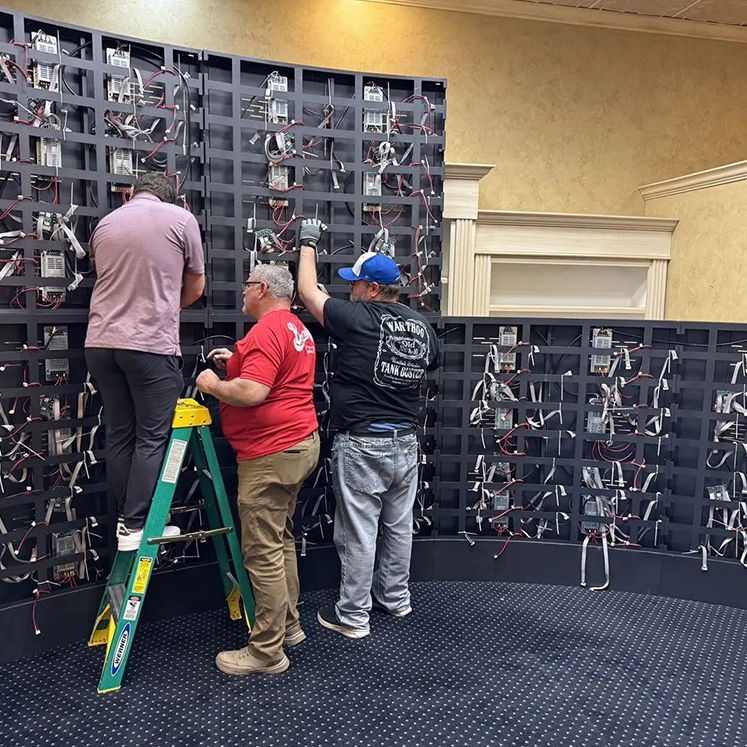 2. Modular Design for Secure and Efficient Assembly
2. Modular Design for Secure and Efficient Assembly
Modern LED display assemblies rely on modular design principles, which allow panels to be seamlessly connected and detached. The aluminum alloy frame serves as the structural backbone that ensures each module aligns precisely. Manufacturers employ CNC machining and tight-tolerance milling to guarantee dimensional accuracy within microns.
To enhance stability during installation, multi-point locking systems and magnetic or mechanical connectors are integrated into the frame’s joints. These features allow each LED cabinet to lock into position quickly while maintaining precise alignment. Such systems prevent vibration and displacement even in high-traffic environments or outdoor installations where wind pressure might otherwise cause movement.
Additionally, anti-slip brackets and double-reinforced edge joints are often used to minimize load stress on the mounting structure. This ensures that even with lightweight construction, the entire display wall remains securely positioned without sagging or distortion.
3. Structural Reinforcement Through Smart Locking Mechanisms
Beyond the frame itself, the fixing system plays a crucial role in maintaining security. The use of cam locks, stainless steel bolts, and quick-release clips offers both rigidity and ease of use. In large-format displays, vertical and horizontal reinforcement bars distribute weight evenly, reducing the risk of localized tension.
Some advanced aluminum alloy frame systems incorporate smart locking mechanisms with built-in sensors that detect proper alignment and secure contact between panels. When the system confirms a perfect fit, it signals through LED indicators or software integration, ensuring installers achieve maximum precision.
4. The Role of Lightweight Design in Installation Efficiency
While stability is crucial, installation efficiency cannot be overlooked—especially in the rental display industry. The lightweight nature of aluminum alloy frames significantly simplifies handling and transportation. Teams can assemble or disassemble large-scale displays with fewer personnel, saving both time and cost.
This advantage becomes even more apparent in indoor exhibitions, concert stages, or trade shows, where installations are frequent and deadlines are tight. Aluminum frames enable tool-free assembly in many cases, allowing for quick adjustments without compromising secure fixation. As a result, event organizers can achieve rapid setup while ensuring long-term reliability throughout the display’s operation.
5. Overcoming Environmental and Mechanical Challenges
Environmental factors such as vibration, temperature changes, and humidity can impact display stability. Aluminum alloy frames, however, are engineered to resist these effects. The combination of thermal conductivity and low expansion coefficients prevents warping during heat exposure.
For outdoor applications, corrosion-resistant coatings and sealed joint systems help prevent water ingress that could otherwise weaken structural components. In areas subject to strong winds or seismic activity, additional anchoring brackets and ground reinforcement bars are used to enhance rigidity, ensuring the display remains firmly fixed under all conditions.
6. Integration with Advanced Mounting Technologies
To further improve fixation reliability, aluminum alloy frame LED displays are compatible with innovative mounting systems such as wall mounts, truss rigs, and freestanding support structures. These systems employ precision locking interfaces and tension-adjustable clamps to maintain uniform pressure distribution across the frame.
In permanent installations, custom brackets and embedded bolts are often used to anchor the display securely to architectural surfaces. For temporary setups, modular stacking systems allow flexibility while still achieving a stable and vibration-free arrangement. This adaptability makes the aluminum alloy frame ideal for both fixed installations and mobile events.
7. Aesthetics and Functional Synergy
The design of aluminum alloy frames also contributes to the overall visual appeal of LED displays. Their slim profiles and smooth finishes complement the sleek modern look of high-resolution panels. Despite being lightweight, these frames maintain a rigid perimeter that minimizes visible seams, ensuring the display appears as a continuous surface.
Furthermore, aluminum’s excellent thermal dissipation helps manage heat produced by LED modules, indirectly extending component lifespan and maintaining image performance. By merging aesthetics with functionality, manufacturers deliver both secure and visually impressive results.
8. Long-Term Reliability and Maintenance Benefits
One of the key benefits of aluminum alloy frame systems is their ease of maintenance. Because the frame is corrosion-resistant and modular, individual parts can be replaced or adjusted without dismantling the entire structure. This design not only enhances operational uptime but also reduces maintenance costs.
Additionally, aluminum retains its mechanical integrity over repeated use cycles. Even after multiple installations and relocations, the frame maintains its shape, ensuring consistent alignment and secure fixation for years.
Conclusion: Balancing Lightness with Security
The secure fixation of lightweight aluminum alloy frame LED display assemblies is not only possible but already proven across industries. Through precision machining, reinforced locking systems, and innovative modular engineering, these displays achieve both portability and durability.
For event organizers, advertisers, and integrators, aluminum alloy structures offer an ideal balance between strength, flexibility, and ease of maintenance. As LED technology continues to evolve, the synergy between lightweight design and secure fixation will remain at the heart of modern modular LED display engineering—ensuring stability without sacrificing innovation.

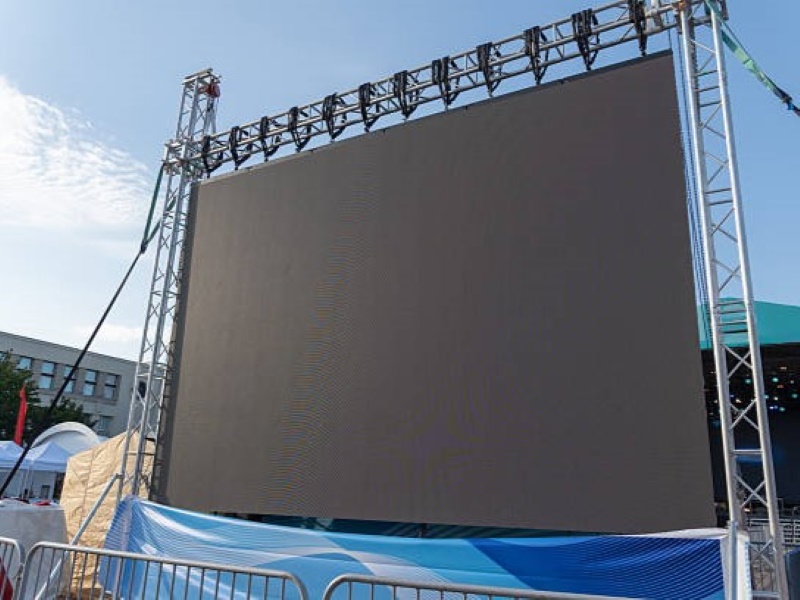
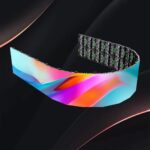
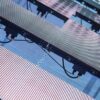
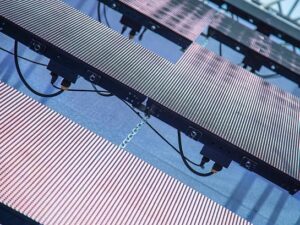

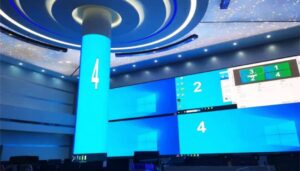
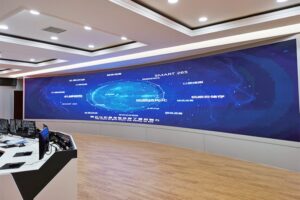
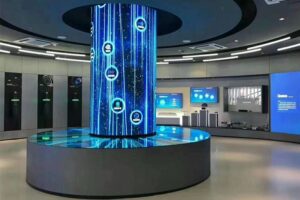
Leave a reply